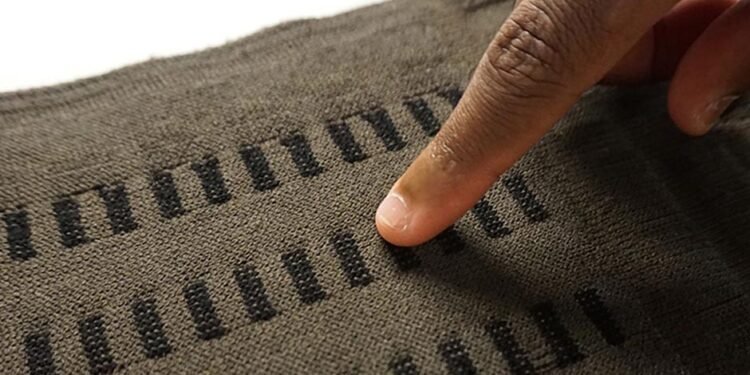What Are Functional Fabrics?
Functional fabrics, such as moisture-wicking polyester, stretchable spandex, and breathable cotton, are materials meticulously engineered to offer specific performance features. Unlike traditional textiles, these advanced fabrics provide benefits such as moisture-wicking, stretchability, and breathability. Such attributes are precious for creating lingerie fabric that ensures both comfort and durability. These fabrics are increasingly popular not just in activewear but also making headway into everyday clothing items.
The growing preference for functional fabrics reflects a significant shift towards comfort, utility, and efficiency. With their limitless potential for product innovation and development—such as the ability to create textiles that can monitor health conditions, change color at the push of a button, and self-clean—these materials are entirely revolutionizing the textile business. Functional fabrics are no longer limited to high-performance athletic wear; they are now a fundamental component in daily fashion, offering a perfect blend of style and functionality.
Benefits of Functional Fabrics
The advantageous properties of functional fabrics significantly enhance both comfort and performance. Here are some of the key benefits these innovative materials offer:
- Moisture-Wicking:Even after vigorous exercises, you will remain dry and comfortable thanks to these textiles’ ability to channel moisture away from the skin. It is particularly beneficial for sportswear, where maintaining dryness is crucial for performance and comfort.
- Stretchability:High-elasticity fabrics fit and move more comfortably, which makes them perfect for active lives. This property is essential for clothing items like yoga pants and performance leggings that require flexibility.
- Breathability: Breathable fabrics facilitate air circulation, keeping the body cool and reducing perspiration. These fabrics are perfect for use in warm climates, ensuring that the wearer remains comfortable and sweat-free.
These features make functional fabrics not just helpful but indispensable in various apparel, from athletic wear to everyday clothing. They provide practical and effective solutions to common issues such as excess sweating, restricted movement, and discomfort, thereby enhancing the overall wearing experience and reassuring you about your clothing choices.
Everyday Applications
Functional fabrics have made a significant mark in various sectors, extending their benefits to casual wear, professional attire, and even specialized garments. Here are some everyday applications that showcase their versatility:
- Athleisure:These fabrics are perfect for activities such as yoga, jogging, or running errands, offering the comfort and flexibility required for multiple activities.
- Workwear:Adaptable fabrics that offer both formality and comfort are ideal for long office hours. They ensure that professionals remain comfortable without compromising on style.
- Casual Wear:Integrating performance fabrics into daily outfits adds ease and practicality to everyday clothing. Whether it’s a casual t-shirt or a pair of jeans, functional fabrics elevate comfort to a whole new level.
This versatility makes functional fabrics increasingly indispensable in our daily lives. They are not just limited to high-performance situations but cater to a wide range of activities, enhancing comfort and convenience in every scenario.
Research and Development in Functional Fabrics
The textile industry continually evolves due to ceaseless research and development efforts. Ongoing research in functional fabrics is focused on improving existing properties, such as moisture-wicking and breathability, and developing new functionalities, such as self-cleaning and temperature-regulating capabilities. According to a recent report, innovative fabric technologies are constantly being introduced, expanding the range of possibilities for these materials. By providing new capabilities and enhanced performance qualities, functional textiles may better satisfy the changing needs of contemporary customers, which is made possible by continuous research.
These advancements are essential in creating fabrics that can adapt to different conditions and uses. The continuous innovation in this field ensures that the textile industry stays ahead of consumer needs, offering products that are not only comfortable but also perform exceptionally well under various conditions.
Choosing the Right Functional Fabrics
When selecting functional fabrics, it’s essential to consider specific needs and activities. For example, a trusted resource advises choosing moisture-wicking fabrics for workouts to stay dry and comfortable. Meanwhile, breathable materials are ideal for use in warm climates, helping to regulate body temperature. You may significantly improve your overall performance and level of comfort by selecting textiles that are appropriate for their intended use.
Functionality and comfort levels might fluctuate significantly depending on the fabric selection. Whether it’s for athletic wear, professional attire, or casual clothing, selecting the appropriate functional fabrics ensures that you get the best performance out of your garments.
The Future of Functional Fabrics
As technology continues to advance, the future of functional fabrics holds immense promise. Emerging trends in the textile industry include the development of fabrics that can change color, fabrics that can monitor health conditions and fabrics that can generate electricity. These trends are pushing the creation of more environmentally friendly and sustainable choices with an emphasis on sustainability and environmental protection. The trajectory of these innovations suggests a potential revolution in everyday clothing solutions as fabrics become more sustainable, functional, and environmentally conscious.
The future of functional fabrics points towards a shift, a promising shift, towards greater emphasis on sustainability and multi-functionality. Manufacturers are expected to prioritize the creation of fabrics that not only offer high performance but also minimize their environmental impact. This aligns with the global movement towards sustainable living and suggests that the future will see a substantial increase in environmentally friendly fabric options, giving us hope for a more sustainable and functional future of fashion.
Conclusion
The emergence of functional fabrics represents a groundbreaking leap in textile innovation, introducing a new era of clothing with unparalleled comfort, resilience, and performance. For example, functional fabrics can provide a cooling effect in hot weather, a warming effect in cold weather, and a moisture-wicking effect during physical activity. Whether worn for professional, recreational, or athletic pursuits, these dynamic textiles are revolutionizing the landscape of everyday attire. Their adaptability and efficiency present contemporary wardrobes with a range of versatile and high-functioning options, ensuring that individuals can experience optimal comfort and utility in their sartorial choices.
As the textile industry continues to progress, functional fabrics are poised to assume an increasingly pivotal role in our daily lives, catering to our constantly evolving needs and preferences. Their integration into diverse apparel forms signals a promising future for both the textile sector and consumers, heralding a new chapter characterized by innovative and effective clothing solutions. To stay up to date on the latest advancements in functional textiles, you can subscribe to trade magazines or follow reputable textile companies on social media.












